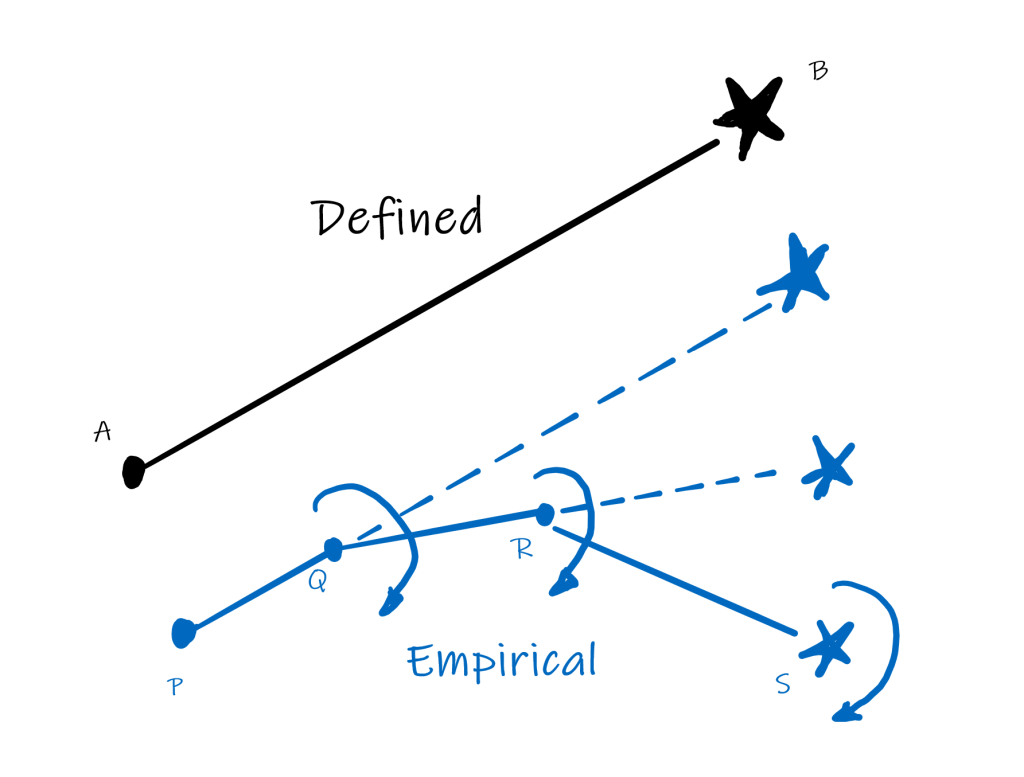There are two types of process controls
- Defined
- Empirical
Defined process control is based on the assumption that we know what needs to be done. In this case, the work is executed as set of steps. Defined process control is generally done using Waterfall framework.
Empiricism asserts that decisions be taken based on what you observe.

Let us consider the above diagram. In the above diagram lets consider the first part where we are at A and we need to solve the problem statement defined as B. If we know everything about this problem, we create a plan and we execute the plan. This is an example of a Defined work. Waterfall works very well for this kind of work.
Examples of defined work may include the following
- Construction of a building
- Regulatory projects such as tax regulation
- Y2K problem where date replacement was done
- CRM system with standard features
In the above diagram consider that we want to solve the Blue Problem. Suppose we do not understand everything about this problem. Then we create a long term plan only at high level. We create short term plan P-Q. Then observe whether we are going in right direction or not. If not, we change our plan towards R. If we find out from feedback that we have to move towards S then we again move towards S. This is example of an empirical work.
Examples of Empirical work may include
- Building artificial intelligence algorithm
- R&D for a vaccine for an unknown disease
- Mobile application development for unknown end customer requirements
Empiricism rests on 3 pillars
Transparency
Every aspect of the work has to be made visible and open to everyone. This allows the data to flow transparently and decisions can be taken based on what you see. In Scrum there are many things which you work on transparently. Product Backlog, Sprint Backlog and Increment are transparently shown to all stakeholders. Anyone gives feedback on anything. The Scrum Master teaches the team to transparently display all the work to the Scrum Team and the stakeholders.
Inspection
The Scrum Artifacts are constantly inspected by the Scrum Team and Stakeholders. Product Backlog is inspected continuously – at the bare minimum during Sprint Review. Sprint Backlog is inspected throughout the Sprint. Increment is inspected at a bare minimum during Sprint Review.
Adaptation
Scrum uses various events to adapt the artifacts and make changes as required. Sprint Planning and Sprint Review are used to adapt the Product Backlog based on the inspection done. Sprint Backlog is adapted throughout the Sprint. Increment is inspected in Sprint Review and feedback helps to adapt it with new requirements next sprints.
Scrum is based on this Empirical Process Control Theory. Scrum is based on Transparency, Inspection and Adaptation. Each artifact and event is designed for inspection and adaptation. Scrum Team imbibes these basics and keep transparency, inspects and adapts continuously.
